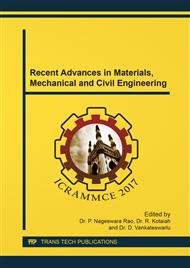p.60
p.66
p.82
p.87
p.92
p.98
p.104
p.110
p.118
An Analysis on Bilayer Tube Flaring
Abstract:
Lightweight design for vehicle industry is not anymore an optional condition but a mandatory need to reduce the fuel consumption and adhere to environmental regulations. To achieve this goal many single parts have been removed and complex design have been implied. This includes implementation of tailored-welded blanks and multi-layer materials. Due to the increase use of dissimilar materials in a component it is also called as hybrid components. It was observed that due to use of hybrid component the part weight decrease and thus increase fuel efficiency. To continue this aspect, in this bilayer tube flaring is investigated. The metal tubular material from inside and polymer from outside is considered for flaring. The flaring behavior of the tube is analyzed and compared with the single metal layer. The strength difference and effect of that on the formability is discussed and resulted. It was observed that due to contact of lower strength material from outside the formability of the metal tube increased and failure is delayed.
Info:
Periodical:
Pages:
92-97
Citation:
Online since:
February 2018
Authors:
Keywords:
Price:
Сopyright:
© 2018 Trans Tech Publications Ltd. All Rights Reserved
Share:
Citation:


